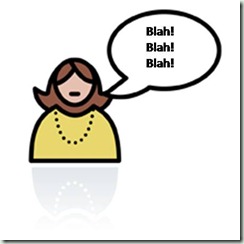As a copywriter I am normally involved in writing copy for printed or online media. However I and currently working on project that involves creating scripts for podcasts. The series is designed to teach staff how to effectively use an internal piece of software.
I’m writing this post to highlight the differences between writing for spoken word and the written word.
If you are creating a piece of copywriting that is designed to be read (such as website copy, brochure, email etc.) you will write in a completely different style than if you were writing a script.
So why are these two techniques so different?
Written copywriting
Written copy is something physical. It appears before your reader and can be read and re-read as many times as they want. If you have a complex sentence within the copy and the reader loses their way, they can go back over it again to make sense of it.
Although your written copy should be simple, it has the luxury of being there to be read again and again. It can be passed on to others and referred back to when necessary. It is a form of reference material that is ever present.
Written copy tends to use full words rather than contractions. You tend to see “you will” rather than “you’ll” so it takes one a slightly more formal tone than spoken language.
Spoken copywriting
In contrast, copy for the spoken word utilises contractions, simple words and sentence structures.
The spoken word is transient – once it’s been spoken it’s gone. If you use complex sentences within your copy not only does it make it difficult for the voice-over artist, but if your listener also loses their way, they have no way of returning to the copy to work out what you were trying to say.
Frequently when writing scripts, the script will go before several people before being finally agreed. This can cause a “Chinese Whispers” effect as more and more people have input. Different voices begin to appear; people lose sight of the fact that this is supposed to be spoken and not read.
Therefore it is vital to always ensure everyone involved with the process understands the aim of the script, who will be listening and that they are constantly reminded that this is spoken language.
You should actively use informal language (within reason so it fits within the company’s brand and image) – write as you would speak. When you’ve completed an initial draft of your script read it out loud. Are there any sections that sound ungainly? Is it easy to follow? Do you run our of breath reading long sentences? These are all questions that should be constantly in your mind as you review your work.
Golden rules to remember
So next time you are involved in script writing remember:
- Keep your sentence form simple
- Use simple language
- Use contractions as you would when speaking naturally
- Make sure the information is imparted simply
- Read it out loud – if you run out of breath or lose your way, so will your listener
If you bear these 5 points in mind when you write the spoken word, your copywriting will flow, be easy to understand and accessible to your listeners.
Sally Ormond – freelance copywriter







0 comments ↓
There are no comments yet...Kick things off by filling out the form below.
Leave a Comment